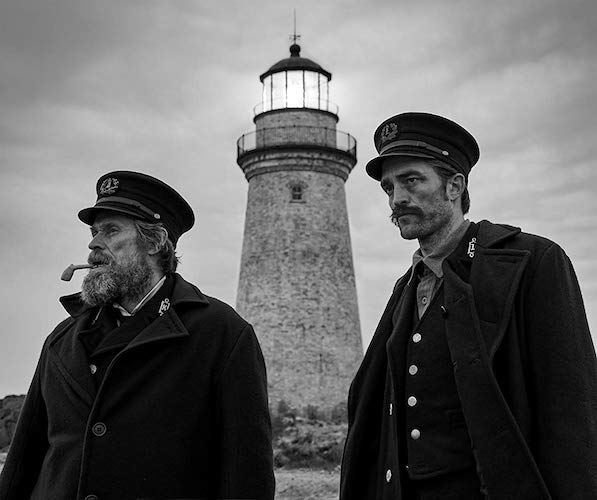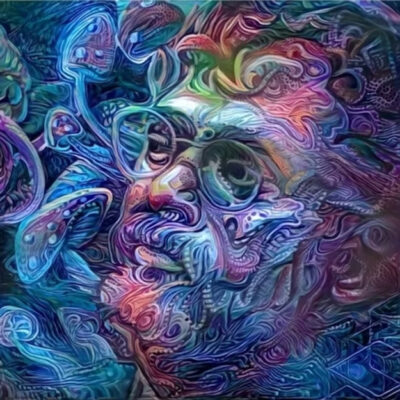
In 2016, writer/director Robert Eggers gifted us with The Witch, an auspicious first film that helped add the phrase “elevated horror” to the critical lexicon as a shorthand way of describing creative aspirations above and beyond cheap jump scares and gratuitous gore. With his second film, The Lighthouse, a surreal thriller about a couple of lighthouse keepers in the 1890’s stranded together for four weeks, Eggers has not only elevated the genre, he’s raised the bar.
The titular lighthouse is introduced from an offshore perspective in the tradition of prison-island films. The evocation is apropos. In what amounts to voluntary incarceration, Ephraim, played by Robert Pattinson, arrives at an island along the southern tip of Nova Scotia in order to help Thomas, portrayed by Willem Dafoe, run his lighthouse. Ephraim is replacing the assistant who went mad obsessing over the lighthouse lamp, thinking it was enchanted. Adding to the mystery, Thomas insists that only he can tend to the lamp, relegating Ephraim to mundane chores.
As tensions rise, and days turn to weeks, Ephraim becomes increasingly unhinged. Nightmarish visions tinged with homoeroticism and nods to Greek mythology blur the lines between reality and fantasy. Alcohol heightens the dissonance, and time begins to loose all meaning. Ephraim, like his predecessor, becomes increasingly obsessed with the lamp, which is kept under lock and key. His short stint to make a little money soon becomes a horrific imagining of what it would be like if Prometheus checked in to the Overlook Hotel.
The Lighthouse feels like a product from an earlier era, in no small part because it was shot with black and white film using old style cameras and lenses, some dating back to 1918. The result is a boxy aspect ratio that creates a pressure cooker atmosphere. The actual lighthouse used for filming was a 70-foot recreation so authentic, the locals in the area petitioned that it remain in place after production had ended. Based on a design from 1909, the lighthouse lamp is a thing of otherworldly beauty, like a glowing, alien orb.
The sound design is as meticulously layered and detailed as the sets. Clanking machinery, frequent flatulence, and the sound of wind, ocean, and gulls all conspire to arouse our olfactory recall of foul air, grease and brine. Real life lighthouse journals, as well as 19th century literary works by Herman Melville and Sarah Orne Jewett, inspired the stylized language. Omnipresent is the baleful moan of the foghorn.
Immersive art direction coupled with stellar performances from the two leads push The Lighthouse into instant classic territory. Willem Dafoe is magnificent as a crusty old sea dog, huffing and puffing and asserting his dominance over the inexperienced younger man. Whether he’s reading Ephraim the Riot Act or cursing him with Miltonesque verbosity, he’s utterly mesmerizing. And Pattinson is perfection as Dafoe’s foil, giving a performance that weaves reserve and neurosis so tightly he becomes a walking powder keg.
The plot might be a tad threadbare. But as a dark fable, The Lighthouse resonates on the level of collective memory and myth, providing a thoroughly engrossing, veritable masterpiece of performance, period detail and visual inventiveness.
For KSQD’s Film Gang, this is Paul Kanieski












